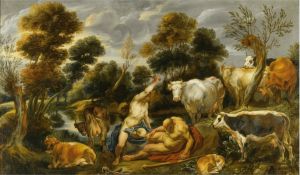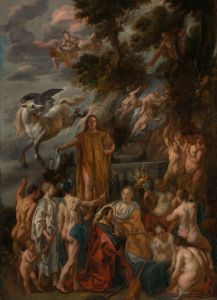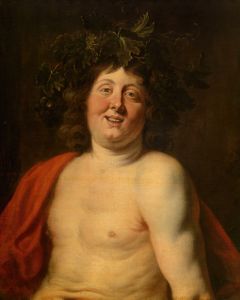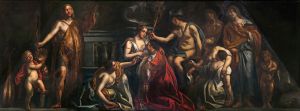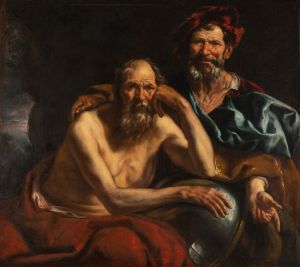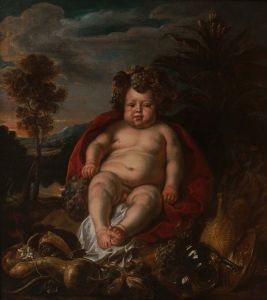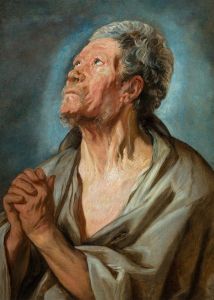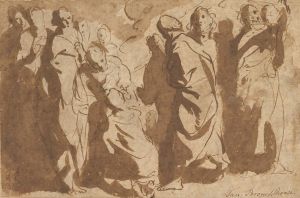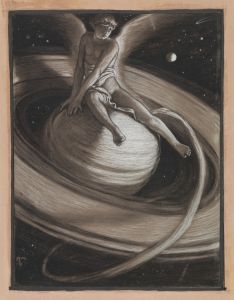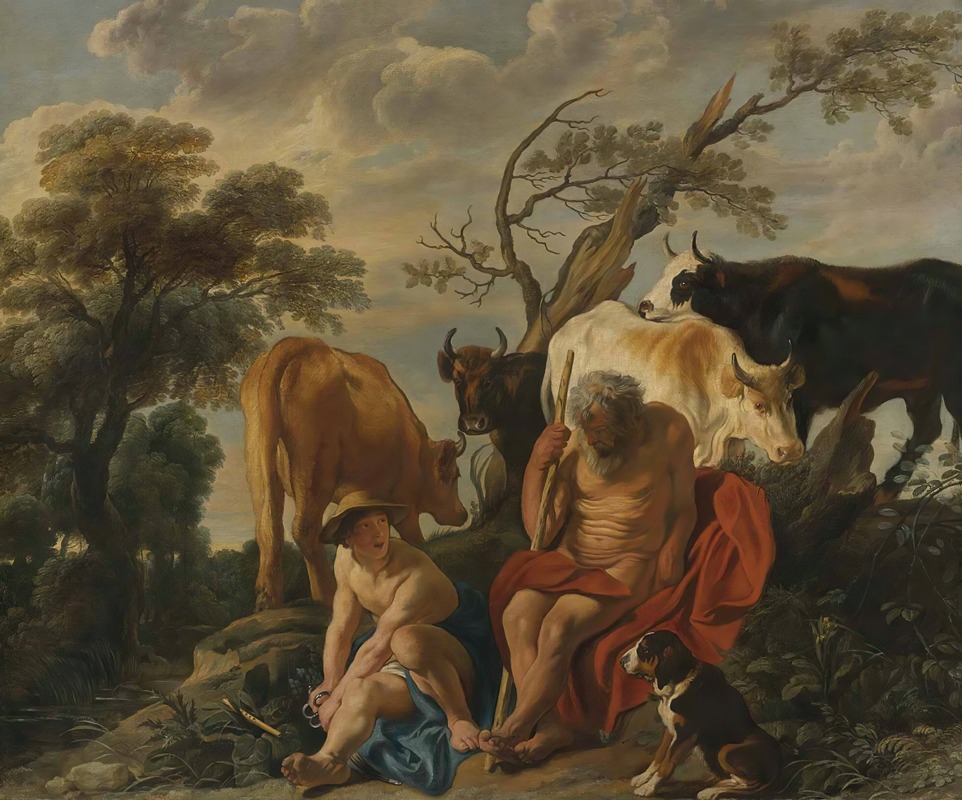
Mercury And Argus
A hand-painted replica of Jacob Jordaens’s masterpiece Mercury And Argus, meticulously crafted by professional artists to capture the true essence of the original. Each piece is created with museum-quality canvas and rare mineral pigments, carefully painted by experienced artists with delicate brushstrokes and rich, layered colors to perfectly recreate the texture of the original artwork. Unlike machine-printed reproductions, this hand-painted version brings the painting to life, infused with the artist’s emotions and skill in every stroke. Whether for personal collection or home decoration, it instantly elevates the artistic atmosphere of any space.
"Mercury and Argus" is a painting by the Flemish Baroque artist Jacob Jordaens, created around 1620-1625. Jordaens was a prominent painter in the Southern Netherlands, known for his vibrant use of color and dynamic compositions. He was a contemporary of Peter Paul Rubens and Anthony van Dyck, and like them, he contributed significantly to the development of Baroque art in Flanders.
The painting depicts a scene from Ovid's "Metamorphoses," a classical work of Roman literature that has inspired countless artists throughout history. The story involves the god Mercury (Hermes in Greek mythology) and Argus Panoptes, a giant with a hundred eyes. According to the myth, Argus was tasked by the goddess Juno (Hera in Greek mythology) to guard the nymph Io, who had been transformed into a cow. Juno assigned Argus to this duty because his many eyes made him an excellent watchman, as he could always keep some of them open while he slept.
In the painting, Jordaens captures the moment when Mercury, sent by Jupiter (Zeus in Greek mythology) to rescue Io, uses his cunning to lull Argus to sleep. Mercury is depicted playing the flute, an instrument often associated with his role as a messenger and trickster. The serene and almost hypnotic expression on Argus's face suggests that he is being lulled into a deep sleep by Mercury's music. Once Argus is fully asleep, Mercury will kill him, freeing Io from her captivity.
Jordaens's composition is notable for its dramatic use of light and shadow, a hallmark of Baroque art. The figures are rendered with a robust, almost sculptural quality, and the rich, warm palette enhances the sense of drama and tension in the scene. The painting also reflects Jordaens's skill in depicting human anatomy and his ability to convey complex emotions through facial expressions and body language.
"Mercury and Argus" is a fine example of Jordaens's ability to blend classical themes with the dynamic and expressive style of the Baroque period. The painting is housed in the Gemäldegalerie Alte Meister in Dresden, Germany, where it continues to be admired for its artistic and historical significance.
Jordaens's work, including "Mercury and Argus," played a crucial role in the dissemination of Baroque aesthetics in Northern Europe. His paintings are characterized by their lively compositions, rich coloration, and the ability to convey narrative through visual means. This particular work not only showcases his technical prowess but also his deep engagement with classical mythology, a common source of inspiration for artists of his time.





